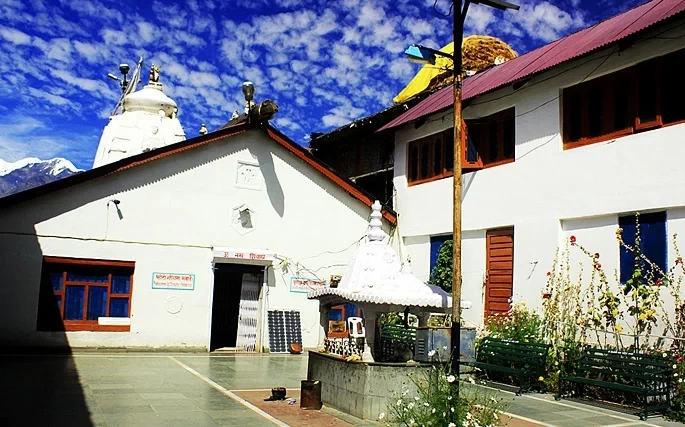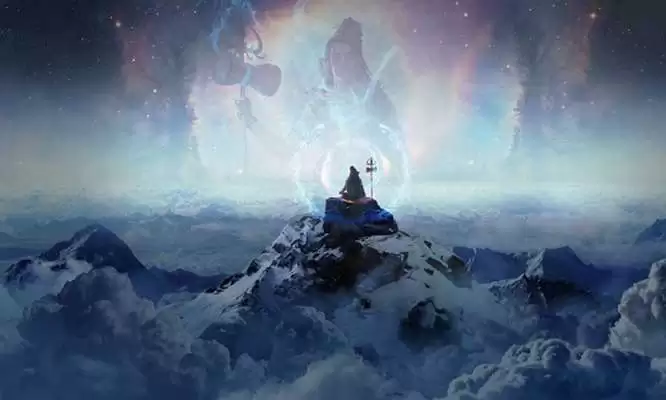Mahakaleshwar Temple Ujjain is one of the most sacred and revered Hindu temples in India. It is dedicated to Lord Shiva, the destroyer and transformer of the universe, and one of the 12 Jyotirlingas, the manifestations of Shiva that are considered to be the most powerful and auspicious. The temple is located in the ancient city of Ujjain, which is also known as the city of temples and the cultural capital of Madhya Pradesh. The temple attracts millions of pilgrims and tourists every year, who come to seek the blessings of Lord Shiva and witness the magnificent rituals and festivals that are held here. If you are planning to visit this divine abode of Lord Shiva, here is everything you need to know about Mahakaleshwar Temple Ujjain.
Mahakaleshwar Temple History

The history of Mahakaleshwar Temple Ujjain dates back to the ancient times, when Ujjain was the capital of the legendary King Chandrasena. According to the legend, a demon named Dushana attacked Ujjain and tried to destroy the city and its temples. King Chandrasena was a devout worshipper of Lord Shiva and prayed to him for help. Lord Shiva appeared in the form of a Jyotirlinga and destroyed the demon with his power. The Jyotirlinga came to be known as Mahakaleshwar, meaning the lord of time and death, and the temple was built around it.
The temple has witnessed many historical events and invasions over the centuries, and has been damaged and rebuilt several times. The temple has also been visited by many famous saints, poets, and rulers, such as Adi Shankaracharya, Kalidasa, Vikramaditya, and Akbar.
Mahakaleshwar Temple Architecture
The architecture of Mahakaleshwar Temple Ujjain is a blend of Maratha, Bhumija, and Chalukya styles, and reflects the artistic and cultural heritage of Ujjain. The temple is spread over three levels, with the main shrine of Mahakaleshwar on the lowest level, facing south. The south-facing lingam is a unique feature of the temple and signifies the destructive and fearsome aspect of Lord Shiva. The lingam is adorned with flowers, sandalwood paste, and a snake made of silver. The lingam is also covered with ashes (bhasma) every morning during the Bhasma Aarti, which is one of the most important and popular rituals of the temple.
The middle level of the temple houses the shrines of Omkareshwar, another Jyotirlinga, and Nagchandreshwar, a rare idol of Lord Shiva with his consort Parvati and their son Ganesha. The Nagchandreshwar shrine is open only on the day of Nag Panchami, when thousands of devotees flock to the temple to get a glimpse of the deity. The upper level of the temple has the shrines of Goddess Parvati, Lord Ganesha, Lord Kartikeya, and Kal Bhairav, the fierce form of Lord Shiva. The temple also has a shikhara (spire) that rises to a height of 33 meters, and a sabha mandap (assembly hall) that has a silver-plated Nandi, the bull mount of Lord Shiva. The temple complex also has a kund (pond) called Koti Tirtha, which is believed to have the water of all the holy rivers and places in India.
Mahakaleshwar Temple Timings and Darshan
The temple is open for visitors from 4 am to 11 pm every day, with some variations depending on the season and the festivals. The temple offers different types of darshan and rituals that can be performed by the devotees, such as:
Bhasma Aarti:
This is the most famous and sought-after ritual of the temple, in which the lingam of Mahakaleshwar is bathed with the ashes of a funeral pyre, symbolizing the cycle of life and death. The aarti is performed every morning from 4 am to 6 am, and is attended by a limited number of devotees who have to register online and follow a strict dress code of dhoti and saree. The aarti is a mesmerizing and spiritual experience, as the priests chant the mantras and offer the bhasma to the lord, while the devotees sing and dance in devotion.
Mahakal Darshan:
This is the general darshan of the lord, which is available throughout the day, except during the aarti and the puja times. The devotees can have a close and clear view of the lingam, and offer their prayers and offerings. The darshan is free of cost, but the devotees have to go through a security check and a queue system, which can take some time during the peak hours and seasons.
Rudrabhishek:
This is a special puja that can be performed by the devotees who wish to seek the blessings of Lord Shiva for their health, wealth, and happiness. The puja involves the bathing of the lingam with water, milk, honey, curd, ghee, and other items, while reciting the Rudra Sukta, a hymn from the Vedas. The puja can be booked online or offline, and can be done individually or in a group, depending on the availability and the preference of the devotees.
Laghu Rudra:
This is another special puja that can be performed by the devotees who want to attain the highest form of salvation and liberation from the cycle of birth and death. The puja involves the recitation of the Rudra Sukta 121 times, and the offering of 121 bilva leaves to the lord. The puja is considered to be very powerful and auspicious, and can be booked online or offline, and can be done individually or in a group, depending on the availability and the preference of the devotees.
Mahakaleshwar Temple Festivals and Events
The temple celebrates many festivals and events throughout the year, which showcase the rich and vibrant culture and tradition of Ujjain and Madhya Pradesh. Some of the major festivals and events that are celebrated at the temple are Mahashivaratri, Kumbh Mela, Kartik Mela and Nag Panchami.
How to Reach Mahakaleshwar Temple
The temple is easily accessible by various modes of transport, such as air, rail, road, and local transport.
By air: The nearest airport to the temple is the Devi Ahilyabai Holkar Airport in Indore, which is about 60 km away. The airport is well-connected to major cities in India, such as Delhi, Mumbai, Bangalore, and Hyderabad. From the airport, one can take a taxi or a bus to reach the temple. The nearest railway station to the temple is the Ujjain Junction, which is about 2 km away.
By train: The railway station is connected to many important destinations in India, such as Delhi, Mumbai, Chennai, and Kolkata. From the railway station, one can take a rickshaw, a taxi, or a bus to reach the temple.
By road: The temple is also well-connected by road to other cities and towns in Madhya Pradesh, such as Indore, Bhopal, Gwalior, and Jabalpur. One can take a state-run or a private bus, or hire a car to reach the temple. The temple is located in the heart of the city, and can be easily reached by local transport, such as rickshaws, taxis, or buses.
Best time to visit
The best time to visit the temple is from October to March, when the weather is pleasant and comfortable. The summer months from April to June are very hot and dry, and the temperature can reach up to 45°C. The monsoon months from July to September are humid and rainy, and can cause flooding and waterlogging in some areas.
Places to Visit Near Mahakaleshwar Temple
Ujjain is a city that is full of historical, cultural, and religious attractions, and one can explore many places near the temple, such as Ram Ghat, Harsiddhi Temple, Kal Bhairav Temple, Bhartrihari Caves and Vedh Shala.
Places to Stay Near Mahakaleshwar Temple
Ujjain has many options for accommodation, ranging from budget to luxury, and catering to different tastes and preferences. Some of the places to stay near the temple are Hotel Mahakal Palace, Hotel Imperial and Hotel Anjushree.
Mahakaleshwar Temple Ujjain is a divine abode of Lord Shiva, and a must-visit for devotees and tourists alike. The temple is a treasure trove of history, culture, and spirituality, and offers a unique and unforgettable experience. Whether you want to witness the awe-inspiring Bhasma Aarti, explore the ancient and magnificent architecture, participate in the vibrant and colorful festivals, or simply soak in the serene and sacred atmosphere, Mahakaleshwar Temple Ujjain has something for everyone. So, what are you waiting for? Plan your trip to Ujjain and visit Mahakaleshwar Temple Ujjain, and discover the glory and grace of Lord Shiva.





















